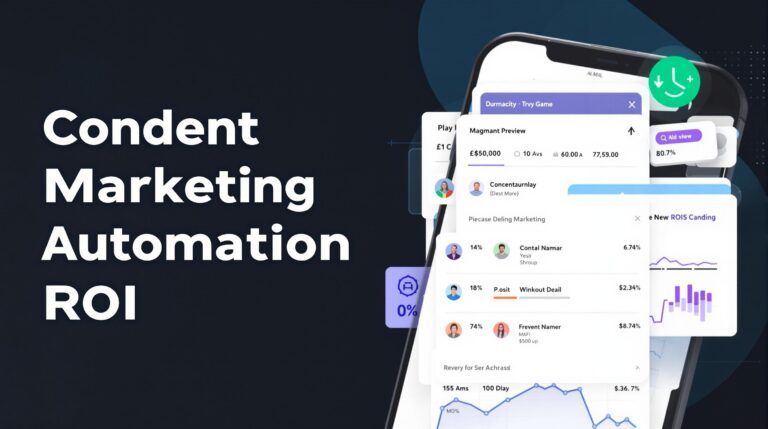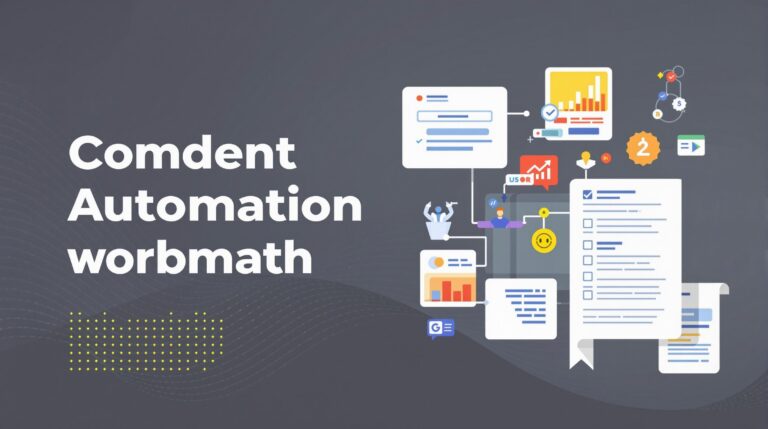How to Boost Efficiency with Content Calendar Automation
Content calendar automation transforms how marketing teams plan, create, and distribute content across multiple platforms. Implementing streamlined workflows and AI-powered scheduling tools can dramatically reduce manual effort while increasing engagement metrics and overall content performance.
Key Takeaways
- Automation saves teams 6-7 hours per week on manual scheduling tasks
- Content production time is reduced by 30% through workflow automation and efficient task delegation
- The ideal content mix follows the 70-20-10 rule (educational-promotional-experimental) for maximum engagement
- AI-powered tools can analyze historical performance to optimize posting schedules based on audience behavior
- Using automation can transform a 10-hour weekly process into just 2 hours of oversight
Understanding the Impact of Content Calendar Automation
The shift from manual content scheduling to automated workflows represents one of the most significant efficiency upgrades for marketing teams. Data shows that teams implementing content calendar automation save an average of 6-7 hours weekly on routine tasks that previously required manual coordination. This time-saving benefit extends beyond just scheduling—content production timelines shrink by 30% when teams leverage automated content workflows for task assignment and progress tracking.
Perhaps most compelling is the direct performance impact. When content is strategically scheduled using AI-powered timing data rather than guesswork, engagement can increase by up to 50%. This happens because automation tools analyze historical data including audience time zones, past engagement patterns, and platform-specific behaviors to determine optimal posting windows. The efficiency difference is stark: what once required 10 hours of weekly manual scheduling can be accomplished in just 2 hours with automation tools managing the heavy lifting.

Implementing a Strategic Automation Approach
Starting your automation journey requires a methodical approach that begins with auditing your existing content. Tools like HubSpot’s content audit template can help identify coverage gaps and performance patterns that should inform your future strategy. Next, selecting the right platforms becomes critical—prioritize those with robust AI analytics capabilities like Sprout Social or Hootsuite that can provide actionable insights.
Creating defined content pillars forms the backbone of an effective automation strategy. The proven 70-20-10 balance works well for most brands:
- 70% educational/value-driven content
- 20% promotional material
- 10% experimental content to test new approaches
Batch scheduling represents another crucial efficiency technique, allowing teams to prepare content in bulk using tools like SocialBee or Buffer. One B2B technology company implemented this content automation strategy and saw a 40% engagement increase through data-driven scheduling. Similarly, a media organization reduced their weekly planning meetings from 4 hours to just 30 minutes by automating routine decisions.
Powerful Automation Tools That Transform Content Management
Several standout tools have emerged as game-changers for content teams. SocialBee ($29/month) offers an AI Copilot that can generate complete content strategies, category-based scheduling, and unified analytics dashboards. SmarterQueue ($29.99/month) specializes in time slot automation and post recycling for evergreen content, ensuring nothing valuable gets lost in the shuffle.
For teams focused on cross-platform publishing, StoryChief provides advanced SEO optimization along with employee advocacy tools that expand content reach. Those seeking customizable workflows might prefer Airtable’s low-code automation capabilities with drag-and-drop project tracking. Monday.com offers visual campaign planning with automated dependency management, making it ideal for complex, multi-stage content rollouts.
Each tool brings unique strengths to content automation tools selection, with the best choice depending on your specific workflow needs and team structure. Many organizations use a combination of specialized tools rather than seeking a single all-in-one solution.
Optimizing Publishing Schedules with Data-Driven Insights
The power of automation truly shines in schedule optimization. Data analysis reveals platform-specific patterns—for example, technical tutorials typically perform 40% better on Mondays for B2B audiences. Smart scheduling also means reserving about 20% of calendar slots for trending opportunities and breaking news, allowing teams to stay relevant while maintaining a consistent publishing cadence.
Real-world results underscore these benefits. A lifestyle brand achieved a 50% engagement increase after implementing cross-platform schedule optimization. Meanwhile, a news organization used automation to instantly reschedule planned content during breaking events, preserving the visibility of evergreen pieces while making room for timely coverage.
The most effective automation tools continuously analyze performance data to refine scheduling recommendations, creating a feedback loop that improves results over time. This data-driven approach eliminates guesswork and allows content teams to focus on creation rather than distribution mechanics.
Measuring Success Through Key Performance Metrics
To justify investment in automation tools, tracking the right metrics is essential. The most immediate benefit appears in time savings—teams typically report an 8-hour weekly reduction in scheduling activities after implementing automation. Engagement metrics provide another crucial measure, though they should be tracked by platform (with Instagram often showing 50% higher engagement rates than LinkedIn for identical content).
For ROI calculation, compare lead generation from automated campaigns versus manual efforts. One agency documented 30% faster production cycles after automation, allowing them to serve more clients without expanding their team. The 70-20-10 content mix provides a useful framework for comparing performance, with automated scheduling typically showing the greatest impact on the educational content category that forms the foundation of most content strategies.
The most comprehensive measurement approach combines efficiency metrics (time saved, content volume) with performance indicators (engagement, conversions) to create a complete picture of automation’s impact.
Maintaining the Perfect Content Mix for Maximum Engagement
Consistency in content mix becomes much easier with automation. The 70-20-10 rule (educational-promotional-experimental) provides an ideal starting balance, but automated tools can help refine this ratio based on actual performance data. Training teams on cross-functional workflows, particularly automated task assignment in platforms like Airtable, ensures smooth execution of this balanced approach.
The contrast between static spreadsheets and dynamic AI tools becomes particularly evident when managing content mix. Tools like Sprout Social can automatically flag topic conflicts or imbalances, while static planning tools require manual oversight. A retail brand case study demonstrates this benefit—their automated system adjusted content mix ratios in real-time based on performance, achieving engagement rates 35% higher than their manually managed campaigns.
The key advantage comes from combining structure (the planned mix) with adaptability (automated adjustments), creating content calendars that maintain strategic balance while responding to performance signals.
Leveraging AI for Advanced Content Calendar Features
Advanced AI capabilities take content calendars from static schedules to dynamic publishing systems. Tools like Sprout Social offer features like dynamic rescheduling, which automatically adjusts timelines to accommodate real-time trends and performance feedback. Predictive personalization represents another frontier, with AI tailoring content delivery to specific audience segments based on their past behavior.
Unified analytics dashboards from platforms like StoryChief and SocialBee centralize cross-platform performance data, allowing for quick adjustments when content underperforms or overperforms. Some organizations leverage competitor monitoring tools that automatically suggest content calendar adjustments based on industry trends and competitive activity.
These advanced features transform content calendars from simple organizational tools into strategic assets that continuously optimize for business results rather than just maintaining a publishing schedule.
Future-Proofing Your Content Strategy with Automation
As platforms evolve and audience behaviors shift, manual content management becomes increasingly challenging. Automation provides the adaptability needed to keep pace with these changes. Data shows that teams using data-driven scheduling typically see engagement increases of around 40% compared to manual scheduling approaches.
Platform-specific optimization creates more consistent brand presence across channels, adapting content formats and timing to each platform’s unique requirements. Perhaps most importantly, AI-powered tools evolve with changing audience behaviors and platform algorithms, continuously refining recommendations based on the latest performance data.
The most forward-thinking teams use automation to handle routine scheduling and coordination tasks, freeing human creativity for content development and strategy. This balanced approach—combining automated workflows with human ingenuity—represents the future of content management for high-performing marketing teams.
Sources
Quuu Blog – 10 Steps to Automate Social Media Content Calendar
Spark AI – Content Calendar Automation
StoryChief – Creating The Perfect AI Content Calendar
Blogging Wizard – 11 Best Social Media Calendar Tools
Twilio – 9 Best Content Calendar Tools for Omnichannel Marketing
Sprout Social – Complete Guide to Content Calendar Creation








